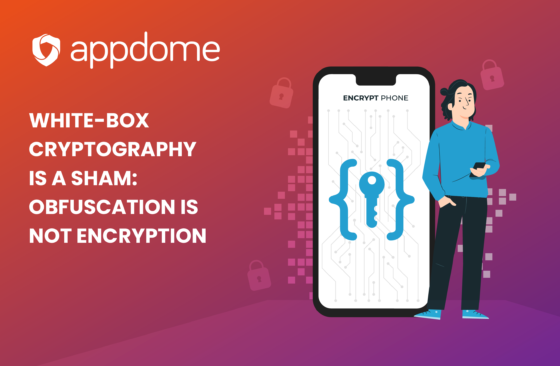I’m so proud that Appdome is the experience leader in mobile defense!
When it comes to building and maintaining secure mobile applications, the user experience (UX) is critical at every level of the defense lifecycle. The term “user” here goes beyond the end-user. It includes the mobile developer who codes and releases apps, the cybersecurity team responsible for evaluating app security, and, of course, the end-user who ultimately interacts with the app.
Unfortunately, security measures often complicate this experience, slowing down innovation and creating friction between teams and between users and the apps they love. Today, mobile security and anti-fraud solutions must be efficient, user-friendly, and, most importantly, not disrupt the workflow of those who build, maintain, and use mobile apps.
Developer’s User Experience: Balancing Security with Innovation
Mobile developers are tasked with writing the code that powers the mobile apps we love. In most organizations, they are also tasked with integrating security features and ensuring that the app meets various regulatory and security requirements. They are under pressure to innovate and deliver new features quickly.
For developers, the user experience is not just about the app’s UI/UX; it’s about their experience building security and anti-fraud features into apps. Many security solutions today still require developers to manually write code or maintain complex integrations, re-implementing bindings between SDKs and applications with each release. This takes time away from innovation and creates a bottleneck in the development process. For developers, the ideal security solution is one that integrates seamlessly into their existing tech stack, removing work and complexity from the DevOps lifecycle.
Cybersecurity’s User Experience: Continuous Security without Resources
The cybersecurity team plays a critical role in the mobile app lifecycle. They are responsible for ensuring that each app meets all necessary standards and is free from vulnerabilities. However, they also need to ensure that the app is secure without placing additional burdens on the development team or slowing down the release process. The cybersecurity team doesn’t have dedicated engineering resources to see that the work needed to protect the app gets done.
For the cyber security team, the user experience is about getting the defense job done without creating conflicts and friction with the engineering team. For cyber, the ideal security solution is one that automates mobile app defense, removing any dependency on engineering time, manual implementation or complex integrations. With this, less friction and more trust between cybersecurity and development teams can blossom.
Mobile User’s Experience: Protection Without Interruption
For the end user, the most important aspect of the mobile app experience is usability. They expect apps to be fast, reliable, and easy to use. But legacy mobile app security has a negative impact on the user experience. For example, legacy security and anti-fraud solutions often put too much strain on the main thread of the application or, worse, rely on attestation models that impose round trip time delays, slowing the app’s performance, increasing ANR rate, and impacting usability. Also, these same legacy security solutions use a “crash to protect” the application, forcing the app crash if a security threat is detected. While this may protect the app, it creates a frustrating experience for the user, who does not understand why the app is crashing or what they can do to fix it.
For the end user, mobile app defense is synonymous and just as important as any other feature in the mobile application. It stands to reason then, that end users expect mobile app security and anti-fraud measures to be a part of the app, not an interruption to it. For instance, instead of crashing the app when a threat is detected, the app could display a message informing the user of the issue and providing instructions on how to resolve it. This approach not only protects the user but also maintains a positive app experience.
Automation and Machine Learning Supercharge the UX
Appdome’s automation and machine learning platform plays a crucial role in ensuring everyone – from the mobile developer to the cybersecurity professional, to the end user – has a positive experience creating, releasing and using the secured mobile app. Automation and machine learning can be used to streamline the coding, development and release of mobile app defense features in mobile apps. This not only improves the defense quality in the mobile app but also reduces the amount of engineering work needed to maintain and adapt the defense model as the engineering team innovates and adds features and services in the app. Globally, end users say having the best defense in their mobile apps should be a #1 priority for mobile brands. With Automation and Machine Learning doing the work for cyber and mobile development, there’s less conflict, less friction, and less resistance to getting the best protection into the mobile app with each release.
Intelligent Defense for Better User Experience
As I said in my previous post, there’s a new trend we’re seeing in the mobile app defense space. I call it Intelligent Defense. Intelligent Defense is a reaction to the poor user experiences that the old-world “crash to defend” security models used to protect mobile apps. In the past, if the security features inside the app detected a security threat, they would crash the app to prevent further damage. However, this approach is no longer considered best practice. Crashing the app not only creates a poor user experience but can also lead to negative reviews and a loss of trust in the app.
Intelligent defense, on the other hand, takes a different – more challenging approach – to stopping threats. The first thing it does it put the user in the center of the defense model. It focuses instead on educating, displaying messages, temporarily disabling certain features, or guiding the user through steps to resolve the issue. The goal is to protect the user without interrupting their experience.
Conclusion: Security Should Enhance, Not Hinder, the User Experience
Security is a critical part of the mobile app experience – that’s a huge statement in an of itself. It should not come at the expense of any user’s experience any more than it should impede any user’s experience. Mobile developers, cybersecurity teammates, and end users are all stakeholders in the mobile app lifecycle. The best security tools and solutions should make that experience better – work seamlessly, without creating additional work or disrupting your experience. By leveraging no-code frameworks, automation, and machine learning, you can ensure that security measures are effective without compromising the user experience. Moving forward, it is essential to prioritize solutions that protect users without hindering their experience, ensuring that mobile apps are both secure and enjoyable to use.






